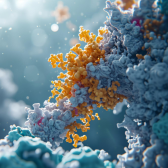Use promo code "24112" to get your promotional price.
Thermo Scientific™ Pierce™ BCA Protein Assay Kits
Use promo code "24112" to get your promotional price.

Specification
| Concentration | BSA: 2 mg/mL |
|---|---|
| Content And Storage |
Sufficient For: 500 tube assays or 5000 microplate assays • BCA Reagent A, 2 x 500 mL • BCA Reagent B, 25 mL • Albumin Standard Ampules, 2 mg/mL, 10 x 1 mL Store at room temperature |
| Assay | BCA Assay |
| Detection Method | Colorimetric |
| Product Line | Pierce™ |
| Product Type | Protein Quantitation Assay |
| Specificity | Not Target-Specific |
| Sufficient For | 500 Tube Assays or 5000 Microplate Assays |
| For Use With (Application) | Solution-based Detection, Absorbance |
| For Use With (Equipment) | Spectrophotometer, Microplate Reader |
| Kit Contents | 10 x 1 mL glass ampules |
| Quantity | 1 Kit (1 L) |
Technical documents
[SET BCA PROTEIN ASSAY KIT, 1L KIT]
[Warning]
[{code=AQUA CHRONIC 2, sequence=1, description=LONG-TERM AQUATIC HAZARD Chronic 2}, {code=AQUATIC ACUTE 1, sequence=2, description=ACUTE AQUATIC Acute 1}]
[{code=H400, sequence=1, description=Very toxic to aquatic life.}, {code=H411, sequence=2, description=Toxic to aquatic life with long lasting effects.}]
[{code=P273, sequence=51, description=Avoid release to the environment.}, {code=P391, sequence=52, description=Collect spillage.}, {code=P501, sequence=53, description=Dispose of contents/container to .}]
[{code=MIXTURE LIST, sequence=1, description=Contains : Copper (II) sulfatepentahydrate}]
[{code=GHS09, sequence=1, description=ENVIRONMENT}]
Product Identifier
- SET BCA PROTEIN ASSAY KIT, 1L KIT
Signal Word
- Warning
Hazard Category
- LONG-TERM AQUATIC HAZARD Chronic 2
- ACUTE AQUATIC Acute 1
Hazard Statement
- H400- Very toxic to aquatic life.
- H411- Toxic to aquatic life with long lasting effects.
Precautionary Statement
- P273- Avoid release to the environment.
- P391- Collect spillage.
- P501- Dispose of contents/container to .
Supplemental Information
- MIXTURE LIST- Contains : Copper (II) sulfatepentahydrate

